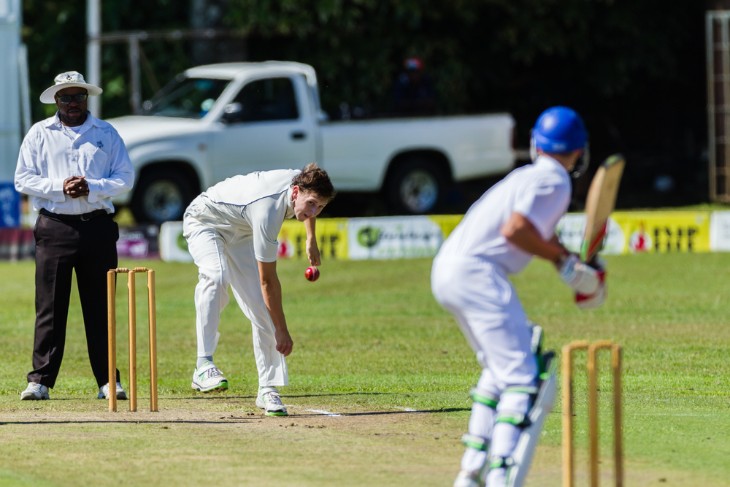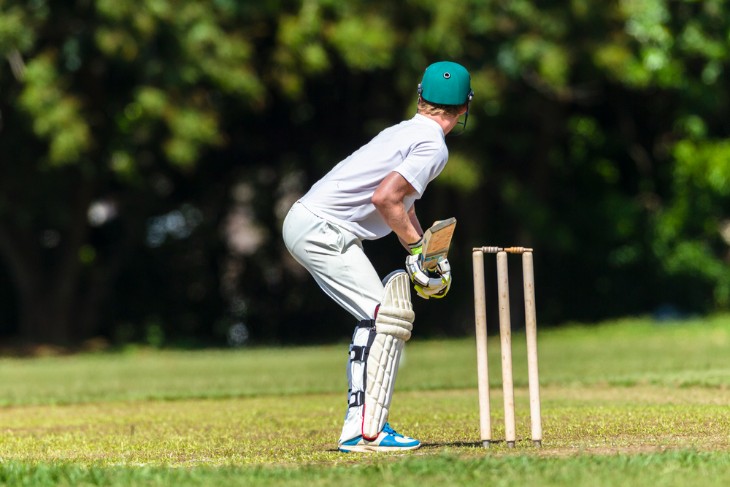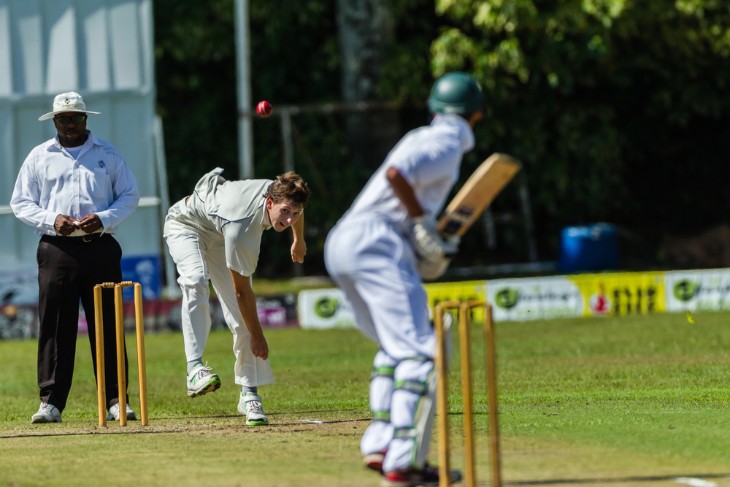- The Origins of Cricket: Tracing its Early History
- The Evolution of Cricket Rules and Regulations
- Cricket Equipment: From Past to Present
- The Spread of Cricket Globally
- Iconic Cricket Grounds Around the World
- Influential Figures in Early Cricket History
- The Role of the British Empire in Cricket's Expansion
- Key Milestones in Cricket's Development
- Cricket in Literature and Popular Culture
- Comparing Cricket: Then and Now
- Conclusion
The Origins of Cricket: Tracing its Early History
Cricket's origins are shrouded in mystery and folklore, with its early history a topic of debate among historians. The most widely accepted theory is that cricket originated in the Weald, an area of dense woodlands and clearings in south-east England, during the medieval period. This theory is supported by the earliest definitive reference to the game, dating back to the 16th century in a court case concerning ownership of a parcel of land. The game was initially played by children, but gradually adults began participating, leading to the game's evolution and formalisation.
Interestingly, cricket's development was significantly influenced by its social context. During the 17th century, it was predominantly a children's game in the rural parts of England. However, the game began to gain popularity among adults, especially in village communities, where it became a common leisure activity. The increased adult participation led to the standardisation of rules and equipment, setting the stage for the sport's future development.
The Evolution of Cricket Rules and Regulations
Cricket has undergone significant changes in its rules and regulations since its inception. Initially, there were no formal rules, and the game was played based on local customs and traditions. The first known code of laws was drafted in 1744, marking a pivotal moment in cricket's history. This code formalised many aspects of the game, including the dimensions of the pitch and the equipment used.
- The Hambledon Club, established in the 1760s in Hampshire, played a crucial role in the development of the sport. It is often referred to as the "Cradle of Cricket".
- The Marylebone Cricket Club (MCC), founded in 1787, took over the role of the guardians of the cricket laws. In 1788, the MCC issued a revised code of laws, which helped to standardise the game across England.
- Over time, the rules have evolved to include innovations such as leg before wicket (LBW), third stump, and the limitation of ball tampering.
These developments were crucial in transforming cricket from a pastime into a structured sport, leading to its spread beyond England and laying the groundwork for international competition.
Cricket Equipment: From Past to Present
Cricket equipment has evolved considerably from its rudimentary origins. In the early days of cricket, the equipment was made from readily available materials and lacked any standardisation. The bat, originally resembling a hockey stick to deal with underarm bowling, evolved into a straight bat to counteract the introduction of round-arm bowling in the 19th century. Balls, initially made from a lump of wool or rags, were later constructed from cork and covered with leather, providing consistency in performance.
- Bats: The shape and size of cricket bats have changed dramatically. The maximum width was established by the MCC in 1835, and since then, the focus has been on refining the balance and weight to aid players' technique.
- Balls: The evolution of cricket balls has been a key factor in the game's development. The weight and size were standardised in the early 19th century, significantly impacting the style of play and bowler strategies.
- Protective Gear: Early cricketers played without protective gear. However, with the advent of faster bowling, equipment like pads, gloves, and helmets became essential. The introduction of helmets in the late 20th century was a significant safety advancement.
These developments in equipment have not only made cricket safer but have also contributed to the evolution of playing techniques and strategies, reflecting the dynamic nature of the sport.

The Spread of Cricket Globally
The spread of cricket around the world is inextricably linked to the expansion of the British Empire. During the 18th and 19th centuries, as British influence extended across continents, so did cricket. The first international cricket match, played between the USA and Canada in 1844, was a precursor to the global spread of the game. In the colonies, cricket was initially played by British expatriates, but it gradually gained popularity among the local populations.
In countries like India, Australia, and the West Indies, cricket became more than just a sport; it was a means of forging national identities and expressing political aspirations. The establishment of national cricket boards and teams in these regions marked a significant shift in the game's dynamics, challenging British dominance. The Ashes series between England and Australia, which began in 1882, symbolised this shift and has since become one of cricket's most enduring rivalries.
The spread of cricket globally has also led to the development of different styles and techniques, influenced by local cultures and conditions. This diversification has enriched the sport, making it a truly global game with a rich and varied heritage.
Iconic Cricket Grounds Around the World
Cricket grounds, often steeped in history and tradition, have played a significant role in the sport's development. These grounds are not just playing fields but are considered temples of the sport, revered by players and fans alike. The Lord's Cricket Ground in London, also known as the "Home of Cricket," is a quintessential example. Established in 1787, Lord's is famed for its rich history and has hosted numerous memorable matches. Another iconic venue is the Melbourne Cricket Ground (MCG) in Australia, known for its massive capacity and as a regular host of the Boxing Day Test match.
- Eden Gardens in Kolkata, India: Known as the "Mecca of Indian Cricket," Eden Gardens is India's oldest and largest cricket stadium, famous for its passionate and knowledgeable crowd.
- The Oval in London, England: As the site of the first-ever Test match in England, The Oval holds a special place in cricket history.
- Sydney Cricket Ground (SCG), Australia: Combining modern facilities with historical charm, the SCG is known for its picturesque setting and rich cricketing history.
These grounds are more than just sports venues; they are repositories of cricket's legacy, each with its unique atmosphere and character. They have witnessed some of the most significant moments in cricket history, contributing to the lore of the game.
Influential Figures in Early Cricket History
Cricket, through its history, has been shaped by numerous influential figures whose contributions have been pivotal in the evolution of the sport. W.G. Grace, an English cricketer, is one of the most notable figures from the late 19th century. Known for his exceptional batting skills and larger-than-life personality, Grace was instrumental in popularising the sport during his time. His career spanned over four decades, during which he dominated the game and laid the groundwork for modern batting techniques.
Another key figure is Sir Don Bradman of Australia, often hailed as the greatest batsman in cricket history. His staggering career Test batting average of 99.94 remains unmatched, making him a legend in the cricketing world. Bradman's style and proficiency greatly influenced the game, setting a standard for future generations of cricketers.
These individuals, among others, have left an indelible mark on cricket. Their skills, achievements, and contributions have not only shaped the game's development but have also inspired countless players and fans worldwide. Their legacies continue to be celebrated in the cricketing community, underscoring their lasting impact on the sport.
The Role of the British Empire in Cricket's Expansion
The expansion of cricket is deeply entwined with the history of the British Empire. During the 18th and 19th centuries, as Britain extended its colonial reach, cricket followed suit, emerging as a tool of cultural imperialism. In colonies like India, the Caribbean, Australia, and South Africa, cricket was introduced by British soldiers, administrators, and settlers. Initially, it was a pastime reserved for the colonial elites, but it gradually permeated local societies, becoming part of the colonial legacy.
In these colonies, cricket served as a means of establishing and reinforcing the British way of life. It was seen as a civilising force, a way to instil discipline and the values of fair play. Interestingly, in time, cricket became a symbol of national identity and anti-colonial sentiment in these regions. For instance, the West Indies' triumphs in cricket were viewed as a form of resistance against colonial rule and racial discrimination, embodying the aspirations and struggles of a people seeking self-determination.
Key Milestones in Cricket's Development
Cricket's journey from a rural pastime to an international sport is marked by several key milestones. These milestones have not only shaped the game but have also reflected broader social and cultural changes.
- First International Cricket Match (1844): The match between the USA and Canada was the first recorded game of international cricket, predating Test cricket by over three decades.
- Inauguration of Test Cricket (1877): The first official Test match was played between England and Australia in Melbourne, marking the beginning of a new era in cricket history.
- Introduction of One Day Internationals (1971): The first One Day International (ODI) was played between England and Australia, giving rise to a shorter, more dynamic format of the game.
- T20 Cricket Emergence (2003): The introduction of the Twenty20 format further revolutionised cricket, appealing to a younger audience and bringing a faster-paced, more entertaining style of play.
These milestones reflect cricket's adaptability and its ability to evolve in response to changing times and preferences. They mark significant shifts in how the game is played and perceived, contributing to its enduring popularity and global reach.

Cricket in Literature and Popular Culture
Cricket has had a notable presence in literature and popular culture, often serving as a metaphor for societal and cultural themes. In literature, cricket has been featured in works by authors such as Sir Arthur Conan Doyle, P.G. Wodehouse, and more recently, Joseph O'Neill in his book "Netherland." These works often use cricket as a backdrop to explore themes of nostalgia, tradition, and the complexities of the human condition. The sport's inclusion in literature not only reflects its cultural significance but also helps to perpetuate its mythos and allure.
In popular culture, cricket has been depicted in films, television shows, and music, further embedding it in the public consciousness. Films like "Lagaan" in India have used cricket as a central theme, symbolising colonial resistance and national pride. The sport has also featured in numerous advertisements and television programmes, often used to evoke a sense of community, tradition, and national identity. This integration of cricket into various aspects of culture underscores its influence beyond the playing field.
Comparing Cricket: Then and Now
The comparison between cricket as it was played in its early days and its modern form reveals significant transformations. Historically, cricket was a leisurely sport, with matches often spanning several days, reflecting a slower pace of life. The rules were more flexible and varied significantly from one region to another. The emphasis was more on social interaction and enjoyment rather than fierce competition. Equipment was rudimentary, with minimal protective gear, and the spirit of the game was grounded in gentlemanly conduct.
In contrast, modern cricket is characterised by professionalism, commercialisation, and intense competition. The introduction of limited-overs formats like One Day Internationals and Twenty20 has revolutionised the sport, making it faster-paced and more entertaining to a global audience. The equipment is now highly sophisticated, with significant emphasis on player safety. The spirit of the game has evolved to accommodate a more competitive and commercial environment, though efforts are made to retain its traditional values of fair play and sportsmanship.
Conclusion
Cricket's journey from a rustic pastime to a global sport is a testament to its enduring appeal and adaptability. Its history is rich with cultural, social, and political narratives, making it more than just a game. Cricket has mirrored societal changes and often been at the forefront of cultural integration, national identity, and international relations. The sport's ability to evolve while preserving its core values is key to its lasting popularity.


